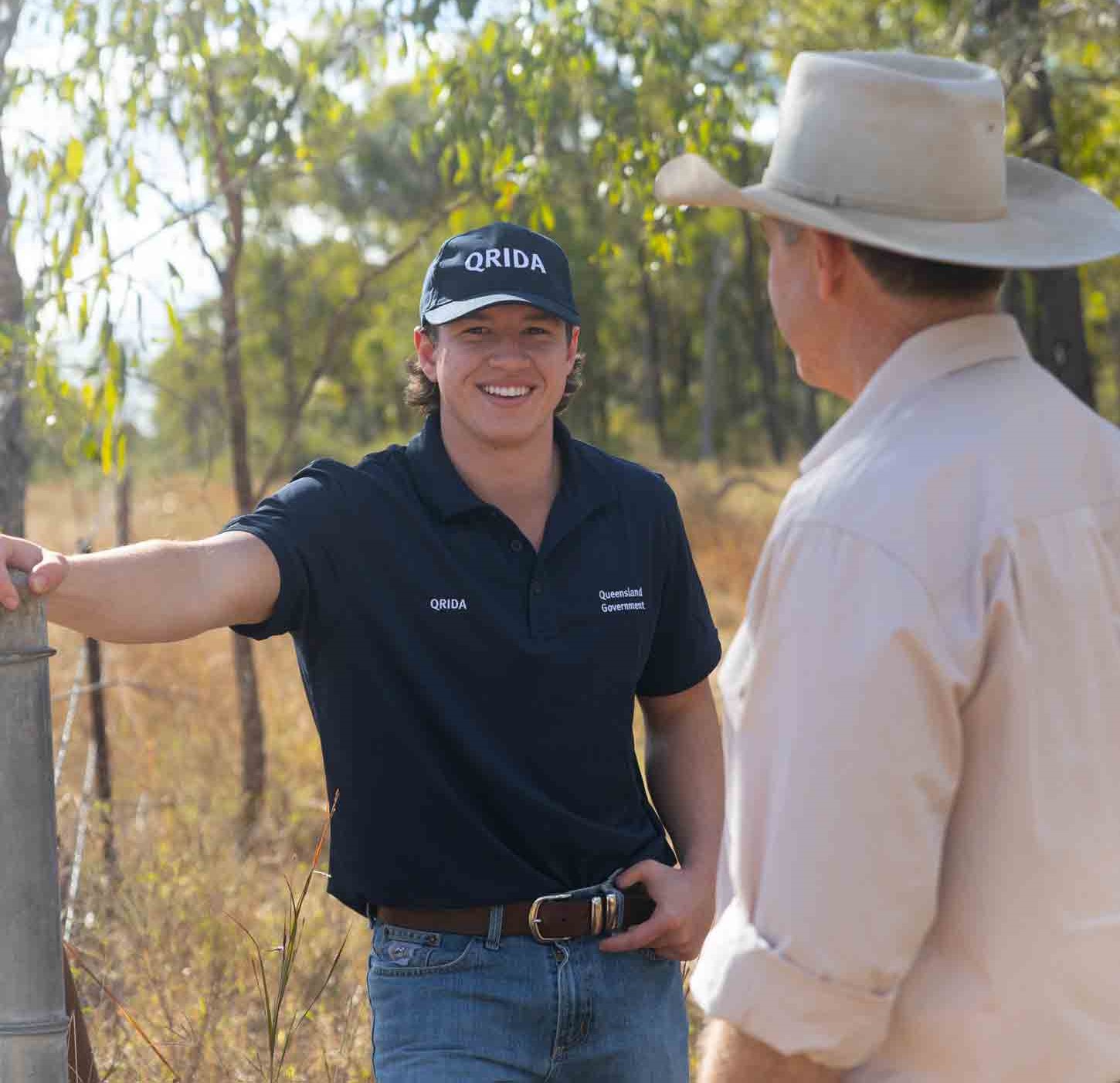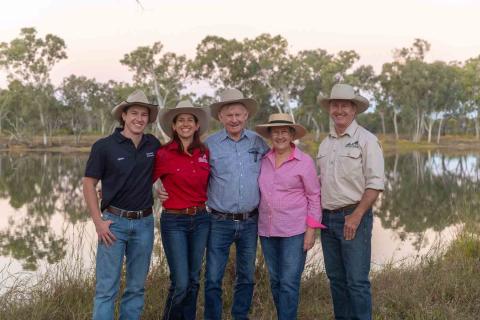As pink skies and tree silhouettes reflect on the lagoon at Wambiana Station, three generations of the Lyons family take in the familiar view and share a laugh after a hard day’s work in the cattle yards.
The cattle breeding and growing-out operation located 70 kilometres south of Charters Towers has been in the family for 112 years, and third-generation owners John and Ronda Lyons swap fond glances as they reflect on where it all began.
“My grandfather bought the property in 1912. He was a man of foresight and determination, and he put up with a lot of trials and tribulations in his lifetime,” John said.
John and Ronda took over the family operation in 1981, and John quipped the secret to their successful partnership was the alignment of their individual strengths.
“I was not a very good scholar in the classroom, but I could hold my own outside,” John said.
“Ronda worked at the bank, so she was very good with figures. I was quite okay at making the money, and then she managed it.”
From bushfires, floods and droughts to market fluctuations and trying economic conditions, John recalled some challenging times from his and Ronda’s grazing days.
“We went through the cattle crash in 1974 when cattle prices went from $300 for a bullock to $30, and everyone got hurt in that cattle crash and a lot of people sold out and went away,” John said.
“We stayed on, but then in ’79 up she went, the prices just jumped up.
“Droughts are another problem. We’ve always sold down rather than to feed cattle, because to feed them involves more expenditure, but if you sell them, you get some money. Then we’ve tucked the money aside and as the rain came and the grass grew, we repurchased.”
John and Ronda were able to overcome the trying times with financial assistance from the Queensland Rural and Industry Development Authority (QRIDA), known as the Queensland Rural Adjustment Authority (QRAA) prior to 2017.
“I can remember, and this was quite some time back, we had a Land Care Loan, we’ve had Sustainability Loans, and presently we have a recovery loan going back to the monsoon disaster,” Ronda said.
“We have been able to manage those things, and we are still here and, in our case, we have five children that we’ve been able to rear here, educate here, then they’ve gone off and they’ve all come back to the bush so that’s probably our biggest achievement.”
Ronda and John’s son, Michael Lyons, now runs Wambiana Station alongside his wife, Michelle Lyons, after taking over the operation in 2018.
“Michael’s parents have been very patient and supportive. We’ve jokingly said we’ve had a 16-year apprenticeship,” Michelle said.
“When we first purchased the property from Michael’s parents, QRIDA provided the First Start Loan.”
Michelle and Michael also accessed a QRIDA Extraordinary Disaster Assistance Recovery Grant to recover from flooding and recently a QRIDA Drought Preparedness Grant to improve the climate resilience of their operation.
“We’re looking at a hay shed for fodder and also spreading water points out so we can have good water security in all the paddocks,” Michael said.
A lot about the cattle industry has changed in the decades that both generations have run Wambiana Station.
“In Dad's Day, they looked more subjectively at the cattle to make decisions on which ones to breed from. Whereas we're doing it a lot more objectively now and pulling hair samples, getting the DNA analysed and predictions on growth rate, fertility and carcass and using that to make data-driven decisions about what we're doing,” Michael said.
However, they all agree QRIDA has helped them along their grazing journey.
“We had a review due just recently, but we were super busy with cattle pregnancy testing and so we contacted the person doing the review and they were very happy to give us an extension,” Michael said.
Ronda said it was a relief to talk with the QRIDA team as they understood the agricultural industry.
“It’s even a mental thing. That there’s someone there that understands the problems that you’re experiencing. They’re there to help. And that’s a big thing when you’re in the bush and things are a bit tough,” Ronda said.
“QRIDA has been wonderful because the big plusses are the lower interest rate, no charges, and you’re given a term to pay it off.”
I n a twist of fate, Michael and Michelle’s son, Tom Lyons, now works at QRIDA as a Portfolio Management Support Officer after recently completing his agribusiness degree.
n a twist of fate, Michael and Michelle’s son, Tom Lyons, now works at QRIDA as a Portfolio Management Support Officer after recently completing his agribusiness degree.
“My upbringing here at Wambiana Station has been very helpful in communicating with clients and helping them,” Tom said.
“It’s good to have a yarn with people who have come from a similar background and to see a different side of the industry, not just the hands-on part growing up in the bush.”
The sky now dark, the Lyons family drive back to the homestead filled with the love of their job in the bush and hopes for more successes on the horizon for Michael and Michelle and generations of Lyons to come.
QRIDA is celebrating its 30-year anniversary this October, and QRIDA Regional Area Manager for North Queensland, Angelo Rigano, said the expert administrator of government grants and loans has helped thousands of primary producers and farming families like the Lyons establish and expand their operations.
“It’s great that we’ve always been there to foster sustainable and resilient communities throughout Queensland for the last 30 years,” Angelo said.
“Agriculture and business generally are so important to the lifeblood of Queensland and we’re all exceptionally proud to have been supporting it for that long.”
For more information about how QRIDA has been helping rural and regional communities thrive for the past 30 years, visit QRIDA's 30-year anniversary web page.
